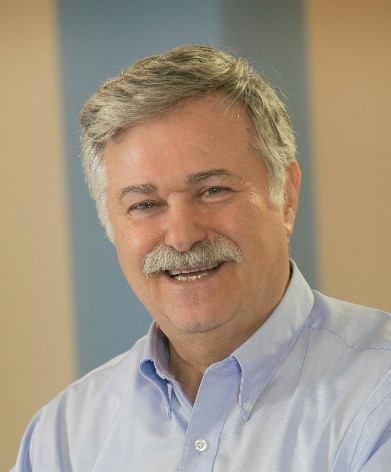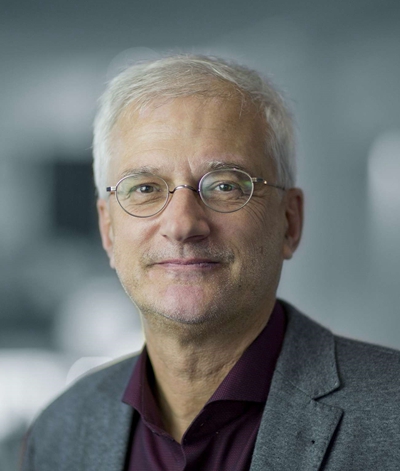
报告人:Arie E. Kaufman
Distinguished Professor of Computer Science
Director of the Center of Visual Computing (CVC)
Chief Scientist of the Center of Excellence in Wireless and Information Technology (CEWIT)
Stony Brook University, United States
题目:Immersive Analytics with Machine Learning
摘要:Many scientific, engineering and medical application require the analysis of data. Immersive visualization (aka immersive analytics) environments coupled with machine learning (ML) capabilities can provide a novel way of interacting and reasoning with such datasets, a form of immersive analytics with machine learning. These environments allow a user to utilize the entirety of his/her visual bandwidth and field of regard, effectively engulfing the user in the data while enabling interaction and analysis, either computationally (e.g., ML) or visually (e.g., visual analytics). We focus on the immersive analytics part and present two stationary environments in addition to mobile head mounted displays. The first is a custom-built 5-wall stereo Cave environment, called the Immersive Cabin. Combined with a range of interaction and navigation tools, the Cabin can support numerous interactive applications of immersive analytics with ML. Current visualization displays, such as the Cabin, however, have not kept up with the explosive growth in visual resolution and ML capabilities. To ameliorate this challenge, we have developed a huge realistic immersive display with ML, appropriately called the Reality Deck. It is a one-of-a kind pioneering 1.5-billion-pixel immersive display facility – a unique assembly of 416 high-res display panels, a 104-GPU cluster, 7 miles of cables, IR tracking cameras, sound system, and human-computer interaction techniques. The GPU cluster is composed of 104 Nvidia RTX 6000 GPUs with 4 displays connected to each GPU. The RTX6000 designed specifically for deep learning and ray tracing, and thus these cluster nodes are dual purpose, for heavy-duty visualization and deep learning. In addition to the Reality Deck being a hybrid visualization-ML production environment, applications are first developed and tested on smaller scale development environments and then deployed on the Reality Deck. The combined cluster in both our production and development environments has 184 RTX 6000 GPUs, providing an aggregate performance of about 3 PFLOPS peak single precision FP32 performance and 24 Tensor PFLOPS. We also describe techniques related to these immersive environments, such as a conformal deformation rendering method on partially-immersive platforms, and the infinite canvas method for displaying “infinitely long” data. Demonstrated applications of immersive analytics include biomedicine (especially cancer detection), architectural design, urban planning, molecular modeling, visual simulation, weather and climate, and entertainment.
个人简介: Arie E. Kaufman is a Distinguished Professor and Chair of the Computer Science Department, the Director of the Center of Visual Computing (CVC), the Chief Scientist of the Center of Excellence in Wireless and Information Technology (CEWIT) , and a Distinguished Professor of Radiology at the State University of New York at Stony Brook(SBU). He joined the faculty at SBU in 1985 and was appointed Chair in 1999. He also held posts at the Hebrew University, Tel-Aviv University, Florida International University, Ben-Gurion University, and Columbia University.
Kaufman was internationally recognized for his contributions to information technology and specifically to visualization and graphics. He was elected to the highest level of a Fellow of IEEE "for contributions to and leadership in visualization and computer graphics," an ACM Fellow "for seminal contributions to and leadership in visualization, especially in volume visualization and its applications," and received the prestigious IEEE Visualization Career Award “for seminal work in the theory and practice of volume visualization." Kaufman also received the 1995 IEEE Outstanding Contribution Award, 1998 ACM Service Award, 1999 IEEE Computer Society's Meritorious Service Award, 2002 State of New York Entrepreneur Award, 2004 IEEE Harold Wheeler Award, and 2005 State of New York Innovative Research Award. He is a member of the European Academy of Sciences.
Kaufman's service to the visualization/graphics community has been very significant. He was the founding Editor-in-Chief of IEEE Transaction on Visualization and Computer Graphics (TVCG), 1995-1998. He has been the co-founder, papers/program co-chair, and member of the steering committee of IEEE Visualization Conference series; co-founder/chair of Volume Graphics Workshop series; co-Chair for Eurographics/SIGGRAPH Graphics Hardware Workshops, the Papers/Program co-Chair for ACM Volume Visualization Symposia. He previously chaired and is currently a director of IEEE CS Technical Committee on Visualization and Graphics. He has served on over 100 program or technical committees.

报告人:Thomas Ertl
Visualization Research Center, University of Stuttgart, Germany
题目:Visualization and Analysis of Large Scientific Data – New Approaches for Volumes, Flows, and Particles
摘要:As size and complexity of data sets resulting from simulations and sensors continue to grow, more elaborate techniques for their interactive analysis and visualization are being developed. This talk presents some of the recent contributions of the VISUS group at the University of Stuttgart focusing on dynamic volumes, multiphase flows, and particle data sets. For volumes we exploit similarity between time steps to select the most important characteristic temporal features, while still allowing exploration, and we develop adaptive algorithms for maintaining interactive frame rates by balancing quality and sampling errors. By direct multi-phase flow simulation, breakup and coalescence of droplets are studied which pose many visualization challenges like coupling the spatial representation with space-time diagrams showing the topological evolution or tracking droplet dynamics over time. In porous media, the behavior and distribution of bubbles influence physical properties of the material. We present an analysis pipeline which groups extracted bubbles and surrounding structures according to their similarity and clusters them, allowing visual comparison after registration. For large particle data sets of more than trillions of particles and for dynamic molecular trajectories we investigate in-situ approaches based on raytracing on CPUs. We conclude with our first attempts to learn interesting features in 3D time series and performance characteristics of visual computing systems.
个人简介: Thomas Ertl received a MSc in computer science from the University of Colorado at Boulder and a PhD in theoretical astrophysics from the University of Tübingen. Since 1999 he is a full professor of computer science at the University of Stuttgart in the Visualization and Interactive Systems Institute (VIS) and since 2007 he is a co-director of the Visualization Research Center (VISUS). From 2015-2018 he served as Vice President of Research of the University of Stuttgart and since 2019 he is the spokesperson of the SimTech Cluster of Excellence. His research interests include visualization, computer graphics and human computer interaction in general with a focus on volume rendering, flow and particle visualization, parallel and hardware accelerated rendering, large datasets and interactive exploration, visual analytics of text collections and social media with applications to geographic information and digital humanities. Thomas Ertl served on numerous program committees and as a papers co-chair for most conferences in the field. From 2007-2010 he was Editor-in-Chief of the IEEE Transactions on Visualization and Graphics (TVCG) and in 2011/2012 he served as Chairman of the Eurographics Association. He received the Outstanding Technical Contribution Award and the Distinguished Career Award of the Eurographics Association as well as the Technical Achievement Award of the IEEE Visualization and Graphics Technical Committee. In 2007 he was elected as a Member of the Heidelberg Academy of Sciences and Humanities. He received Honorary Doctorates from the Vienna University of Technology in 2011 and from the University of Magdeburg in 2014.